Unless you have huge savings through which you can buy a house in cash, you will probably have to go through the process of mortgage verification.
Now, the process of mortgage verification isn’t always a long one but can be a tedious one. While some borrowers choose to borrow from traditional lending institutions like banks, some of them prefer the private money lenders.
Both options have their pros and cons and the final decision needs to be made based on the kind of financing need that you have at the moment.
And if you are a self-employed professional whose income fluctuates every month, qualifying for a mortgage might be harder for you than the rest of the lot.
And that leads to thinking about the best loan options that are available for people who do not draw or make fixed income every month. This was a problem and the commercial real estate lending market did come up with a solution.
The Problem?
When you typically apply for a loan, banks and private money lenders generally require you to provide proof of income.
This is done to verify that you will be making the payments on time. Sounds quite fair. Here are some documents that are generally needed to be produced while you apply for verified loans:
- Income stubs of last 30-45 days
- W-2 forms of last 2 years
- Bank statements of the last 2 years
- Tax returns of the last 2 years
In other words, if you couldn’t verify your income by submitting the above-mentioned documents, it would have been next to impossible for you to secure a loan.
That was the big problem because there was a growing population of self-employed professionals, freelancers and others whose income patterns are not always fixed, like someone who depends hugely on the income earned through stock market trading, etc.
And the biggest concern was – just because they did not have a ‘consistent’ income flow every month, did not mean they cannot afford to repay their loan liabilities and this shouldn’t come in the way of their house buying dreams.
So, the Solution?
The solution to this problem of not being able to secure a loan due to unstable or inconsistent income patterns was No-Income Verification loans.
Also known as commercial stated income loans, it was considered as a boon to the world of real estate and there couldn’t be any happy news that the introduction of no-income verification loans to the self-employed borrowers.
This blog is an outline about these loans, why they were a huge success only for some time, what led to their decline and finally, are commercial stated income loans still available?
What are No-Income Verification loans?
No-Income Verification loans are a type of mortgage that doesn’t require the borrower to submit the proof of income or any kind of documentation of income. They are also called by two other names – “No Doc mortgages” and “Stated income mortgages”.
Put in simple words, stated income mortgages are mortgages that are provided on the basis of the income that is “stated” by the borrowers without conducting any verification of such income stated.
These type of loans immediately kicked off really well and it became to be called as a boon to the world of real estate, especially for self-employed borrowers.
That was a time when stated income loans Florida, stated income loans Houston and other similar states took off really well and had become the talk of the town.
These loans paved a way for many borrowers to enter into the real estate market and not just buy their dream homes, but also venture into commercial real estate investing. But soon, these loans went on a downhill.
Why were Stated income commercial real estate loans successful only for some time?
For a few initial years of introduction, these loans did really well – the borrowers could now easily borrow without any hassles and the lenders lent out money by holding the land as collateral.
But soon, it has to see a downfall. These loans started losing all their credibility when after a few years, there were so many loans lying unpaid with many banks and hundreds of private money lenders.
They came to be called as ‘Liar Loans’ as millions of customers would take these subprime mortgages and ended up being unable to honor their loan liabilities in the long run.
These loans had somewhat become one of the many reasons behind the Housing Crash of 2008 in the United States. And it was during this time that the governing bodies and agencies decided to something about these loans and prevent people who have no regular income stream by such mortgages, only to end up being unable to repay these loans and worsen the economic conditions.
Thus, Dodd Frank Wall Street Reform and Consumer Protection Act of 2010 came in together and made such loans next to impossible to access by providing strict and clear guidelines on the must-have things for a borrower in order for the lenders to lend you money.
So, that was how the commercial stated income loans became close to being obsolete. It took off really well in the beginning, but because of numerous loopholes in the concept of such loans in itself, these loans lost the charm and were on a verge of becoming extinct in the world of commercial real estate lending.
What might have led to the decline of Stated Income Commercial Real estate loans?
The big housing market crash and the consequences of providing loans to people without verifying their repaying abilities, resulting in a poor economy were the two biggest reasons to the decline of Stated Income Commercial Real estate loans.
The scenario soon changed from – anybody can avail a loan for almost anything changed and became – you can get a loan only as long as you have been successful in proving the same.
Bottom-line
Commercial stated income loans vanished just as soon as they became a big hit not only among the self-employed borrowers but also just about anybody looking for a quick commercial real estate mortgage.
Commercial stated income loans became lesser and lesser available with each passing month and year, and finally, these loans were almost thrown out from the market.
Until the year of 2018 where the Congress came in and rolled back a couple of provisions given under the Dodd-Frank Wall Street Reform.
This resulted in many lenders going back to this most loved business of making stated income loans available to the potential borrowers. In other words, lenders could now lend to the borrowers who could not verify their regular income patterns.
The next big question – Are commercial stated income loans still available?
The answer is surprising yes. Yes, you heard that right. There are still a number of stated income commercial lenders who lend out money based on the ‘Stated’ income by the borrower.
So, if you are a self-employed borrower, there is still hope for you and you still can secure such loans. The only glitch now would, however, be that what you will be able to get your hands on will be “Less doc verification” – meaning, stated income loans were made available with little questions asked and submitting just some minimal documents.
These loans are popularly called as “Alternate-Doc loans” and these loans are still available in the market. So, the name changed from “No-doc verification real estate loans” to “Less doc verification real estate loans” or “Alternate-Doc loans”.
Bottom-line: Yes, Less-income verification loans are still available with select stated income commercial lenders, but with a little change and the concept being the same – trying to figure out a way loans can be financed to self-employed borrowers with inconsistent income flows.
Less-income verification loans or Alternate-Doc loans are the new forms of No-income verification loans and you can tell that the latter in its truest sense is no longer common in the commercial real estate lending market.
How to qualify for an “Alternate-Doc loan”?
The little documentation that is needed in order to be able to avail an “Alternate-Doc loan” is the business and personal bank statements of the last 10-12 months of the borrower.
These serve as a little proof to the stated income commercial lenders about the repaying capability of the self-employed borrower.
Here are some other key notes you should be aware of about this new form of stated income loans:
- Since the stated income commercial lenders are on a riskier side by choosing to finance a loan without being fully assured of repayment of a loan, the rates of interest for such loans would be high. In fact, they are quite expensive and stated income loans today can be regarded as one of the most expensive financing options available for commercial real estate investors.
- The credit score of the borrower isn’t really a matter of concern to the stated income commercial lenders. So, if you’ve got a poor credit score, these loans could be the answer you are looking for.
Final words
So, that’s how the stated income loans have come back to the commercial real estate market with a little change. We should note that it is still a big advantage to the self-employed borrowers or to anybody who is looking for commercial real estate financing but has no regular flow of income to show and provide proof of repayment abilities.





